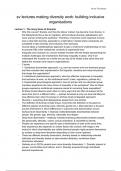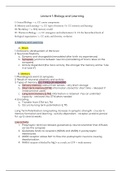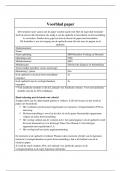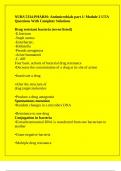Samenvatting
Extensive summary all lectures Diversity in the workplace: building inclusive organisations
- Instelling
- Universiteit Utrecht (UU)
Very extensive summary of all lectures of the course Diversity in the workplace: building inclusive organizations. Most of the mandatory literature is also discussed in these lectures, thus a short summary of the key points of the literature is also included. I noted the names of the authors in the...
[Meer zien]








